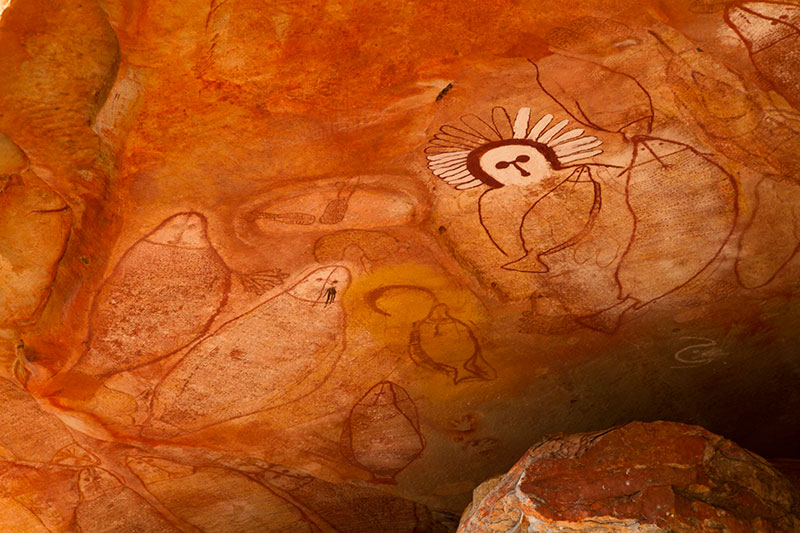Vast, rugged, adventurous and one of the most amazing areas in the world.
Cruise The Buccaneer Archipelago
Western Australia's rugged and remote Kimberley Coast is one of the world's last great wilderness regions, and one of Western Australia's greatest natural assets. It comprises an area of rugged natural beauty with nearly 13,000km of coastline including islands and embayments. The Buccaneer and Bonaparte Archipelagos boast more than 2,633 islands and an extensive system of largely fringing reefs.
Biodiversity Hotspot
As one of Australia's fifteen listed national biodiversity hotspots, the Kimberley coast is home to Australia’s largest inshore reef, world class seagrass meadows, extensive mangrove forests, Western Australia’s greatest diversity of corals, wild rivers, the world’s largest population of Humpback whales and important seabird breeding colonies.
Pristine Wilderness
Largely untouched, and accessible for the most part only by sea, the Kimberley coast is listed as amongst the top 3.7% of least impacted marine environments worldwide, with a thriving, living indigenous culture.
Vital Animal Habitats
The Kimberley coast is rich in species habitats, ranging from mangroves, to seagrass beds, fringing reefs, mudflats and sandy bottoms. In addition, the Kimberley boasts an extraordinarily large tidal range of more than ten metres. This results in two major effects; an extensive tidal zone and strong currents, exceeding five knots at times. The currents also stir up silts deposited by the large rivers of the Kimberley, causing high water turbidity, particularly inshore during Spring Tides.
The Kimberley coast is home to a diverse range of habitats, including mangrove forests, fringing reefs, rainforest pockets and a world class marine province that contains corals that have adapted to unusual climatic conditions, and the calving grounds for the world’s largest population of Humpback whales.
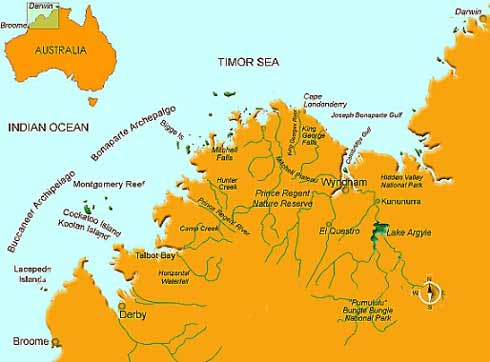
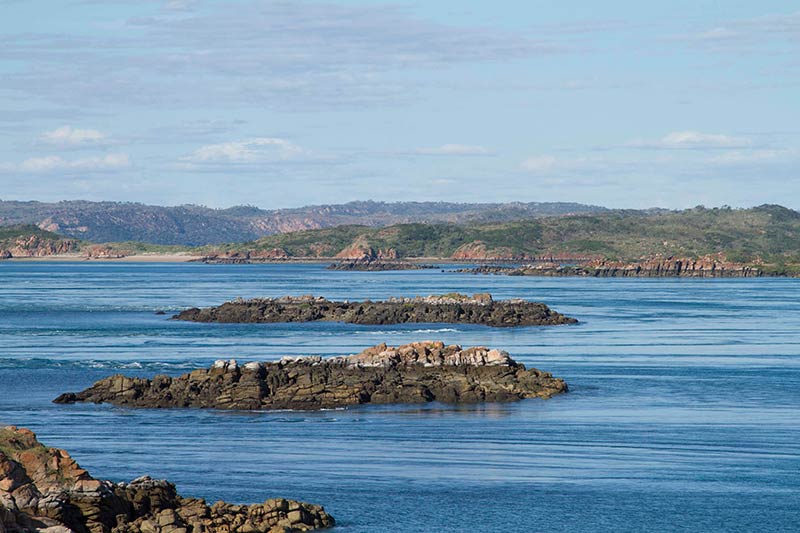
Montgomery Reef
One of the wonders of the Kimberley coast, Montgomery Reef is a spectacle to behold as the entire reef appears to rise from the ocean on a falling tide. With tidal defences of over 10m over a single spring tide cycle, nearly 5m of reef gradually emerges from the ocean, as water cascades down numerous channels. Montgomery Reef and The Montgomery Islands lie some 20 km off the central Kimberley coast, opposite Doubtful Bay (to the east) and Collier Bay (to the south). The reef which covers an area in the region of over 270 km² is some 80 km long and Australia’s largest inshore reef, containing large areas of shallow lagoon, seagrass beds and colourful corals, with abundant marine life including sponges, crabs, cushion stars, turtles and octopi.
Kimberley Marine Parks
Adjoining the Buccaneer Archipelago to the north and Dugong Bay to the south, Talbot Bay is defined by stunning geological features including the Horizontal Waterfalls, the dramatic, vertiginous cliffs of Cyclone Creek, and the fascinating marine province of Turtle Reef, one of the largest reefs on the Kimberley coast which joins Molema Island to the mainland. Turtle Reef has recently received recognition in the marine science community with the publication of a new paper by Dr Barry Wilson, for the mechanism by which its corals cope with unusual turbidity.
The water is very far from clear and oceanic — it's turbid and the light doesn't penetrate far. It's not the sort of environment [conventional] corals require, yet we’ve got this prolific growth of corals.
In January 2013, Colin Barnett, the Premier of Western Australia announced that Talbot Bay and Dugong Bays would become part of a new 3,000km2 Kimberley Marine Park (Class A), also taking in Dugong, Collier and Doubtful bays and Walcott Inlet. Horizontal Falls Marine Park will be a multiple use marine park, including providing ongoing opportunities for recreational fishing and tourism, managed in conjunction with Traditional Owners. Final zoning is yet to be determined. Perth based company Pegasus Metals have plans to mine copper in a strike zone in Talbot Bay
Source https://kimberleycoast.com.au
Horizontal Waterfalls Cruises
One of the icons of the Kimberley coast, the Horizontal Waterfalls in Talbot Bay are a pair of stunning breaks in the McLarty Range approximately 300m apart. The McLarty range itself is approximately 1.8 billion years old, comprised of sandstone, quartzite, siltstone, shale and dolomite with abundant stromatolites. The first and more seaward of the gaps is approximately 25m wide, whilst the second and more spectacular gap is approximately 12.5 wide.
One of the premier tourist attractions of the West Kimberley, the Horizontal Waterfalls attracts tens of thousands of visitors annually by seaplane from Broome and Derby, on charter boats and in private vessels.
It is possible to drive boats through the two gaps to the bay behind.
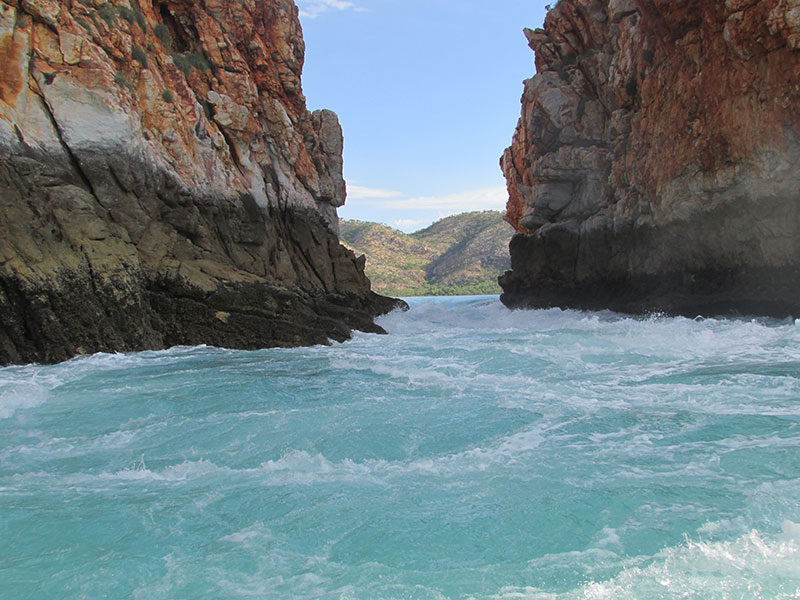
With massive tidal differences of up to 10.8m on a spring tide, the Horizontal Waterfalls (technically termed "pinch rapids") are a natural phenomenon created as seawater builds up faster on one side of the gaps than the other, creating a waterfall up to 5m high on a King tide. With each change of tide the direction of the fall reverses, creating vast tidal whirlpools on the outgoing side. Poulton Creek, which features a healthy mangrove system, feeds into the innermost reservoir, "The Inland Sea", contributing an inundation of freshwater to the marine environment.
The waterfall phenomena has been described by David Attenborough as "one of the greatest natural wonders of the world".
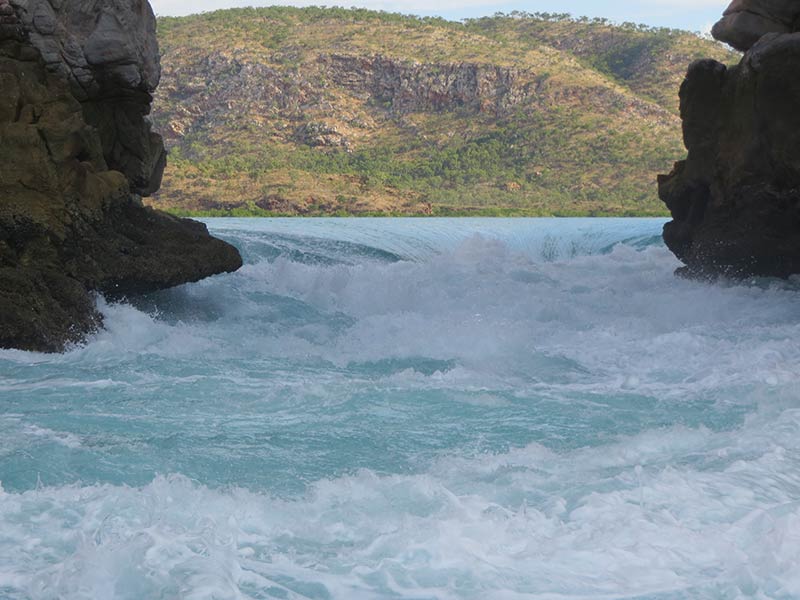
Rock Art Cruises
The Kimberley region is one of the world's greatest repositories of indigenous art and is arguably some of the world's oldest, with evidence suggesting the earliest occupation in the region dates back 50,000 to 60,000 years ago, providing information about how and when people arrived, about the environment at the time, how they lived and adjusted to changing climatic conditions, and something of their beliefs.
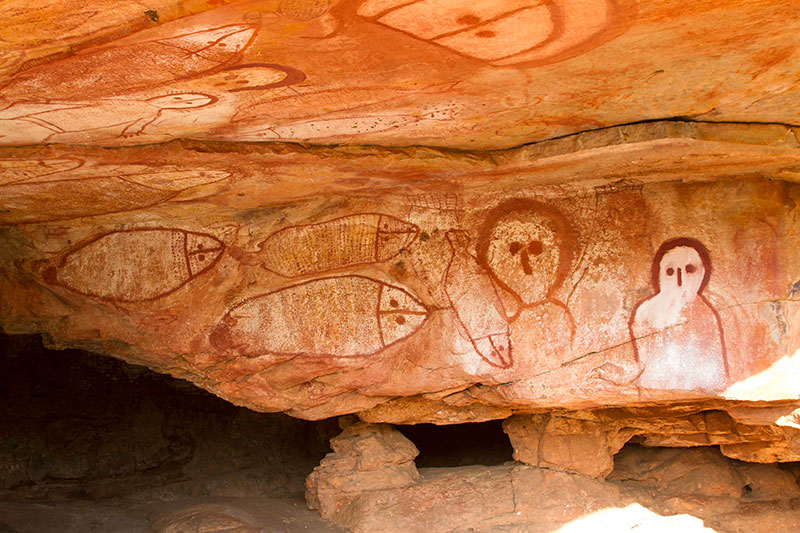
Return to our Kimberley Cruises
As a massive outdoor gallery, the Kimberley's indigenous rock art rivals in richness, cultural complexity and sheer aesthetic achievement more famous than rock art bodies in Europe, Africa and the Northern Territory.
One Tide Charters' 8, 10, 12 & 15 Day cruises incorporate some incredible Wandjina, Gwoin Gwion / Bradshaw rock art.
